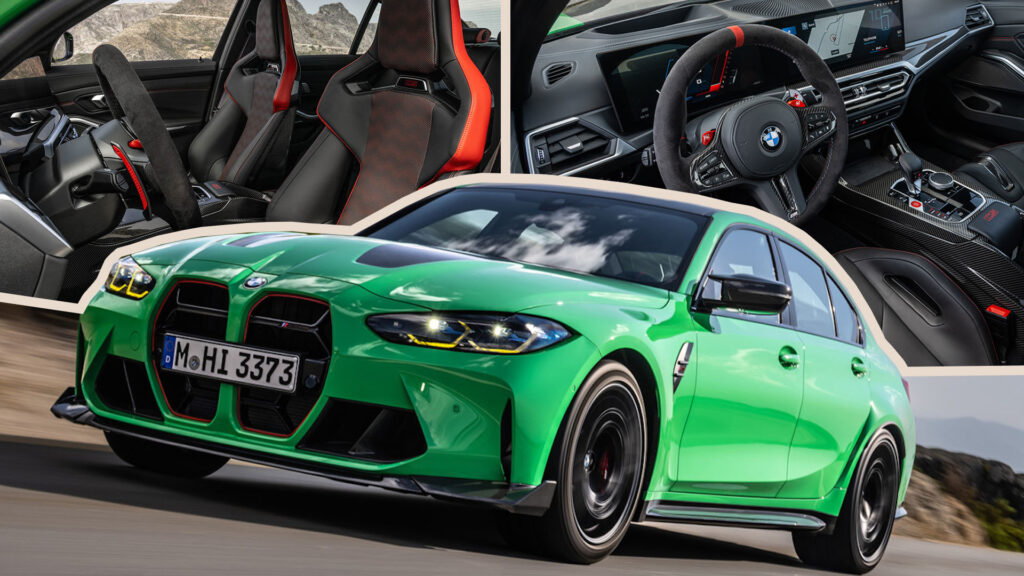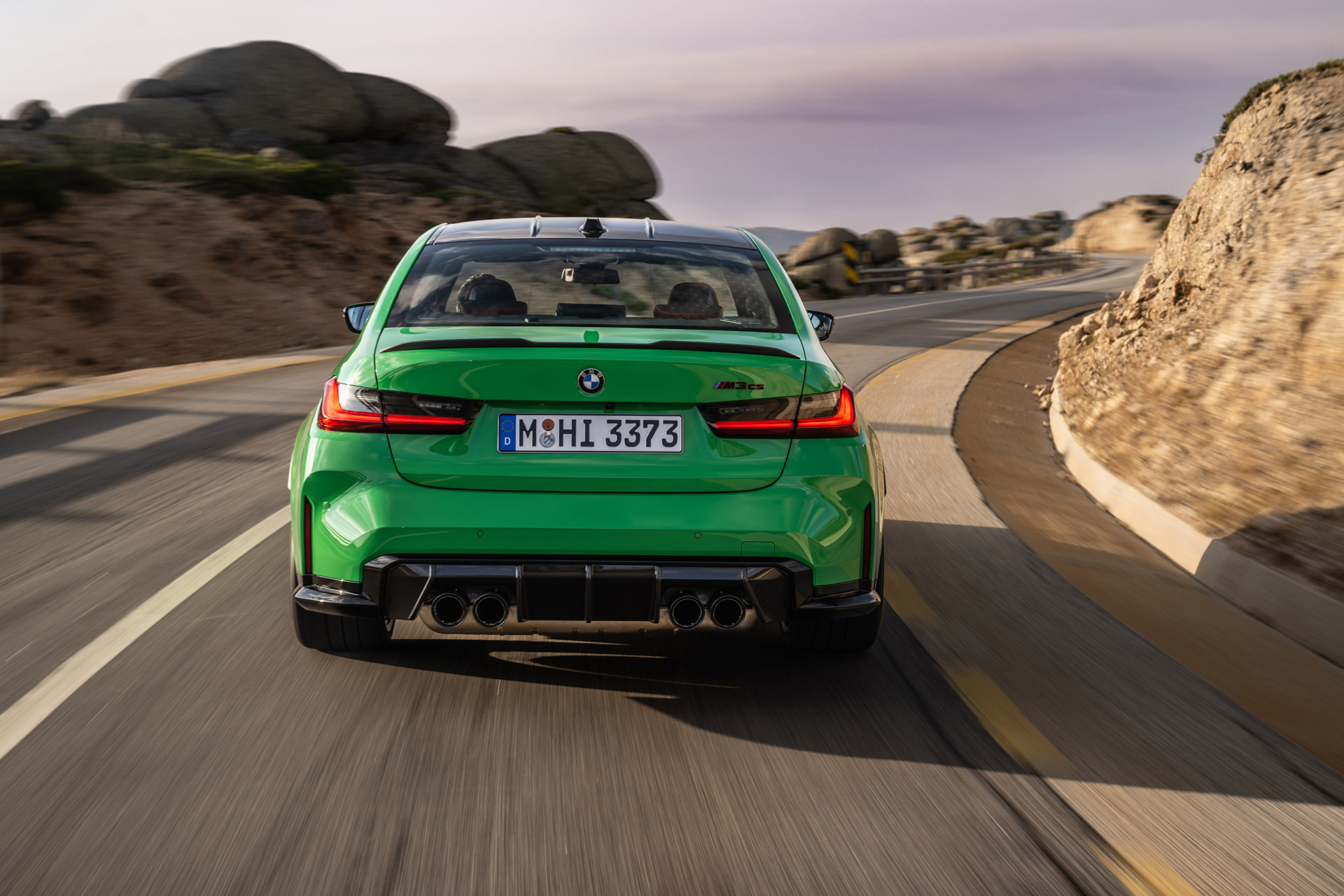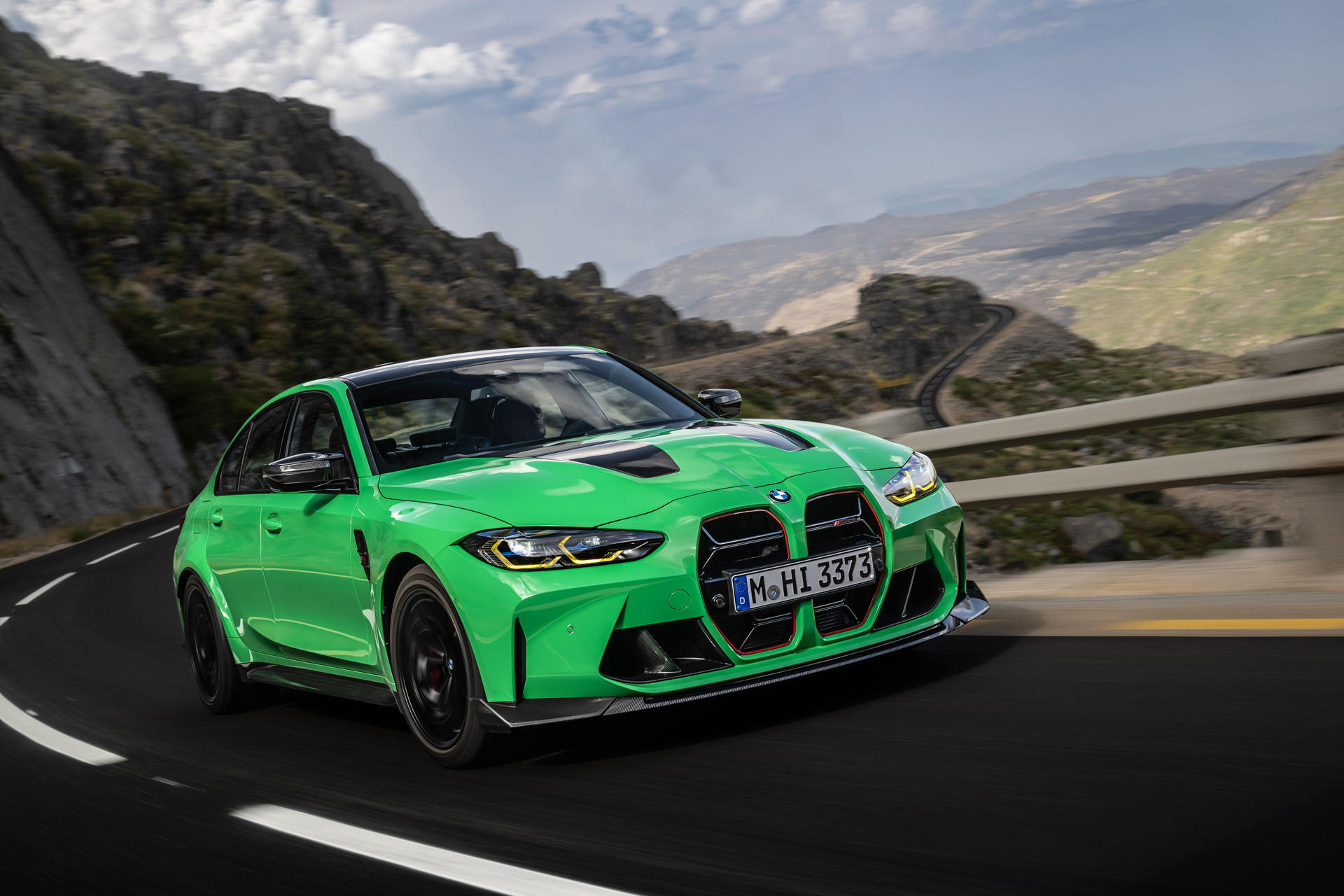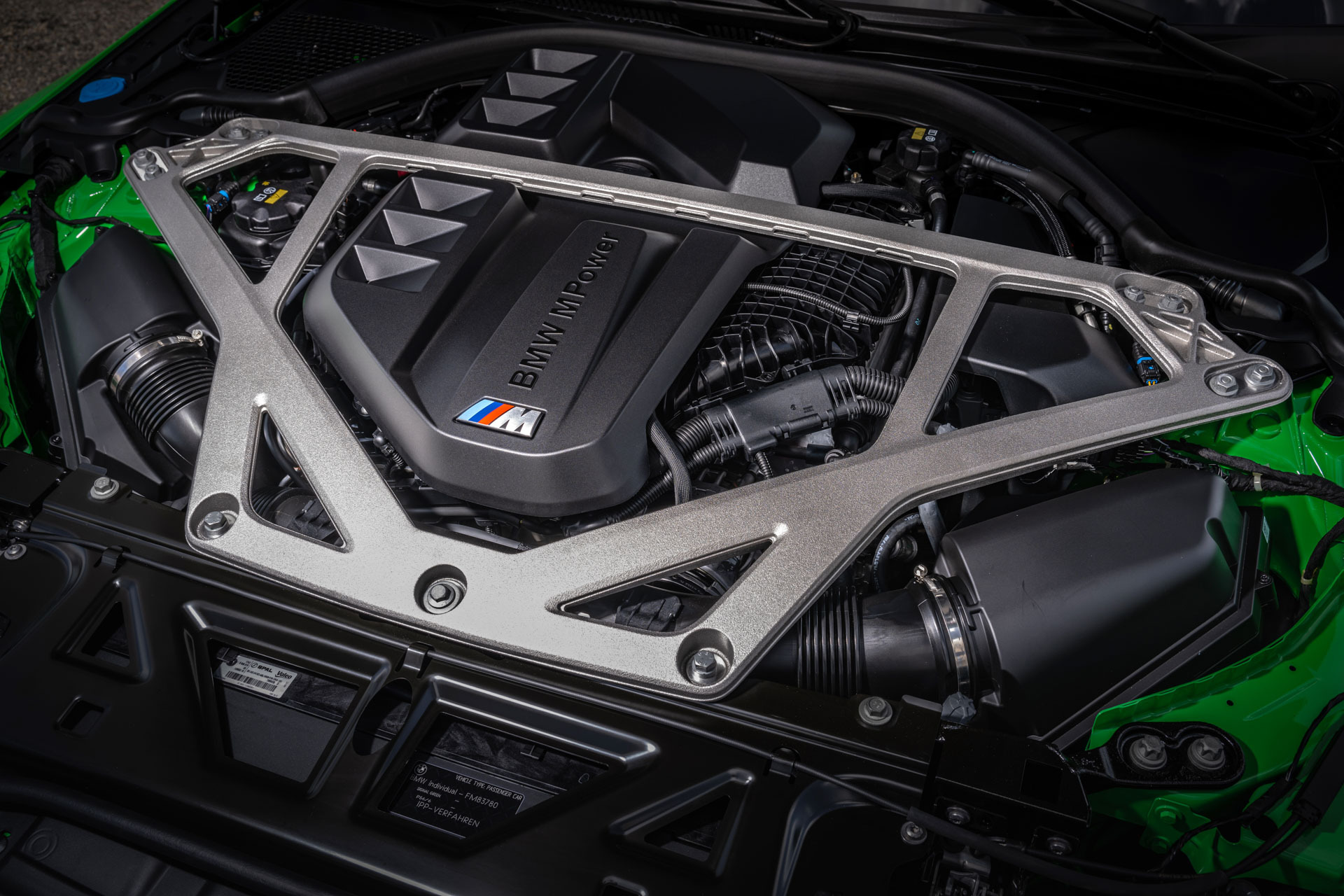The M4 CSL is one of the most driver-focused road cars ever to come from BMW’s M Division. But for drivers who also need to consider passengers, the CSL now has a brother, the M3 CS.
That missing ‘L’ stands for ‘Light,’ and it’s true the CS does weigh more than its CSL sibling for reasons we’ll get into shortly. But this is no watered down CSL. Instead, it repurposes many of the same ingredients, including its 543 hp (550 PS) engine, to offer something with a different character that actually accelerates to 60 mph (97 kmh) 0.4 seconds faster than the coupe and costs $21,200 less.
Related: New BMW 3.0 CSL Is A Re-Bodied M4 With 553 HP And A Manual Gearbox
Most obviously, the $118,700 (plus $995 dest.) CS is based on the the M3 sedan rather the M4 coupe. And that fact doesn’t only make getting into the back seats easier, it makes it possible. Part of the BMW diet program package that helped the CSL earn the ‘L’ in its ‘Competition, Sport, Lightweight’ name involved stripping out the back seats. But the M3 CS retains its rear bench and so can seat four in comfort and five at a pinch, because it really is a bench and not two individual rear seats like on its M5 CS big brother.
CS upgrades to latest curved iDrive display
And that’s not the only interior difference between the pair. Both CS and CSL get the same carbon-shell bucket seats in the front (this time with an illuminated CS logo) and an Alcantara-wrapped three-spoke steering wheel with carbon detailing and carbon shift paddles. But while the M4 CSL retained BMW’s old-style separate digital instrument cluster and infotainment displays, the M3 CS gets the latest curved iDrive screen that was announced for the rest of the 3-Series lineup last September. Though it’s technically made up of two separate screens, the one-piece glass surface makes it look like one giant display and gives the CS a much more modern look.
Selectable all-wheel drive
The other key difference between the pair is in the driveline. Though based on the all-wheel drive M4 Competition, the M4 CSL delivers its power to the rear wheels alone, something normally only open to buyers of the base M4. The M3 CS, however, retains its all-wheel drive transmission and active rear differential, meaning it should offer additional practicality beyond simply giving you more seats than a CSL. But as with the regular M3 and M4 Competition, that transmission can be configured as rear-wheel drive with a couple of button taps.
The CS’s engine is the same 3.0-liter twin-turbo inline six found in the CLS, which is just a warmed-through version of the S58 3.0-liter motor in the 503 hp (510 PS) M3 and M4 Competition. More turbo boost helps lift power in the CS and CSL to 543 hp (550 PS) at 6,250 rpm, though the 479 lb-ft (650 Nm) torque figure is unchanged from the regular Competition’s inline six.
Heavier, but heavier-hitting than CSL
Each of those horses has to work a little harder in the CS than the CLS because there’s more mass to move. Both cars save weight over their Competition donors by using carbon for the hood, seats and details like the air intake, mirror caps, rear diffuser and spoiler and swapping the steel exhaust for an 8 lbs (3.6 kg) slighter titanium one. But the M4 CSL, which went further with a carbon trunk, dropped a massive, and much-needed, 240 lbs (109 kg) to arrive at a total curb weight of 3,640 lbs (1,651 kg). The M3 CS sheds a mere 75 lbs (34 kg) and tips the scales at 3,915 lbs (1,776 kg).
You can lay most of the blame for that with the sedan’s all-wheel drive system, but it’s not all bad news. The xDrive transmission’s extra dig off the line means it gets to 60 mph (97 kmh) in only 3.2 seconds, versus 3.8 seconds for the lighter, but two-wheel drive CSL coupe, and 3.4 seconds for a stock M3 Competition xDrive.
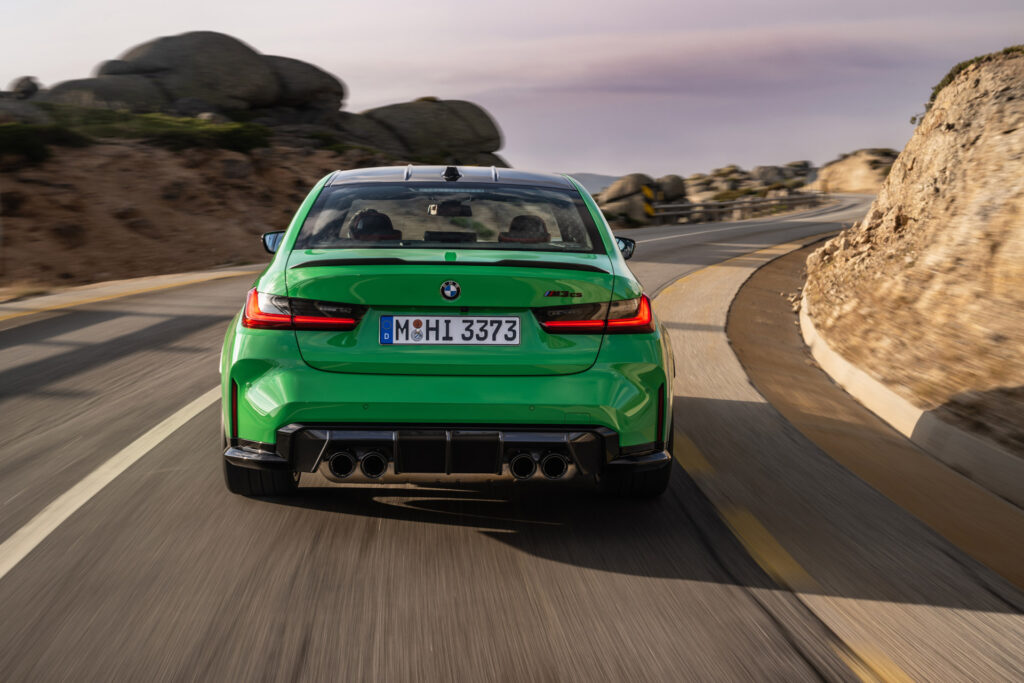
The CSL wins the top speed war, stomping on to 191 mph (307 kmh) while the CS can only manage an electronically limited 188 mph (303 kmh), and the lighter coupe would be quicker around a track. But the sedan gains enough of the same M Division chassis upgrades to ensure it won’t feel out of its depth on a circuit.
Track-tuned chassis
A cast aluminium strut brace keeps the shock towers playing the same tune, there are changes to the camber angle, adaptive dampers, anti-roll bars and steering setup, and the 19-in front and 20-in rear wheels borrowed form the CSL come standard with track-ready Michelin Pilot Sport Cup 2 rubber as standard. Buyers can choose gold or black for those wheels and wrap them in more road-biased hoops if they prefer, or they can head even further down the performance rabbit hole by specifying the optional carbon ceramic brake package.
Also optional is a BMW Individual Frozen Solid White metallic paint that’s only available on the M3 CS, though with its red-highlighted grille, carbon hood valleys and exterior trim, and yellow daytime running lights again borrowed from the CLS, no one is going to confuse your limited edition CS for a regular M3 Competition whatever color you go for.
Related: BMW M EV Prototype Blends i4 And M4 Looks With A Quad Motor Setup
As for how limited it will be, we don’t yet know. BMW made 1,000 M4 CSLs, but hasn’t confirmed how many CSs will be produced, or how many of those will be coming to North America once U.S.-spec cars start rolling down the line in March. Put it this way: they’re not going to hang about, either in the showroom, or on the street.
Would you taken the CS over the CSL? Leave a comment and let us know.




